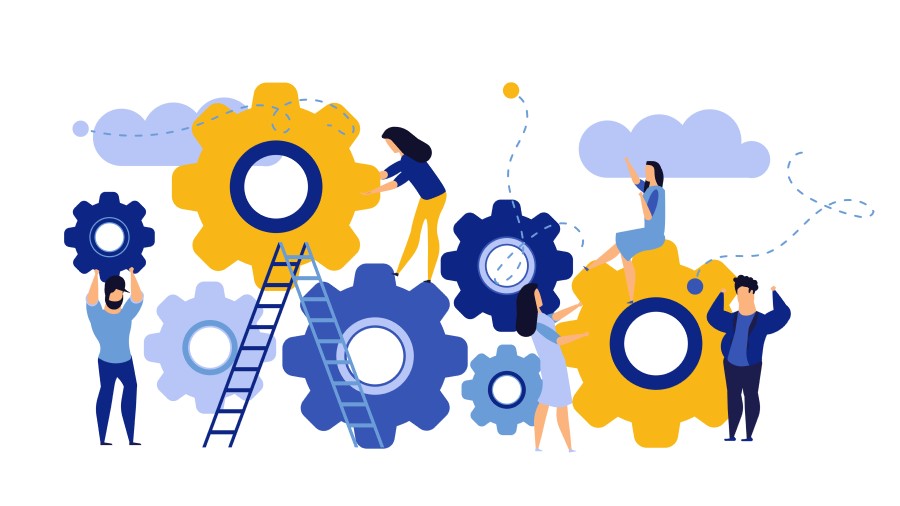Why job design and workforce planning are key to good employee mental health

It is well established that effective job design improves job satisfaction and higher job satisfaction leads to better employee mental health. While promoting a mentally healthy workplace is more complex and multi-faceted than just addressing job design and workforce planning, poor job design may, at best, limit the effectiveness of other mental health initiatives, or worse, be actively working against promoting a mentally healthy workplace.
Understanding the key considerations in effective job design can help an organisation maximise job satisfaction and the impact of their other wellbeing initiatives and therefore make significant strides towards a mentally healthy workplace.
1. The balance of control and demand
People crave control over their working environment, preferring to have some say over how they organise their work, their targets and priorities. Roles that have low control can often also be high demand roles such as those with high production targets or roles handling high call volumes. Research shows that people in roles where the demand is high but the control is low are particularly susceptible to mental health issues. Therefore, finding ways to balance supervision and support with autonomy, allowing some freedom over setting goals and prioritising work, and giving employees a voice when setting targets, can improve feelings of control and in turn protect mental health.
There are reports all over social media of people working more hours in the last six months due to pressures related to Covid and the struggling economy, and this is likely to continue with many businesses facing recruitment freezes or redundancies. As things move at pace it will be easy to forget the importance of job design, and as workforces get smaller, it will be easy to simply redistribute tasks across those who are left. However, businesses need to ensure this doesn’t lead to employees feeling like they are losing control over their workload. Organisations need to decide what is possible with the workforce available, and elements of roles may need to be stopped or reshaped based on new priorities.
However, the research also suggests that control has a much greater impact on job satisfaction and health than demand. Kavimaki et al, in a paper published in the British Medical Journal, found that employees in low-control high-demand roles had significantly higher depression and anxiety than those in high-control high-demand roles. Dr Gonzalez-Mule, in the Journal of Applied Psychology earlier this year, reported that those working in high-control high-demand roles decreased their chances of dying during the study by 34% compared to those in low-control high-demand roles. Therefore, although there will be a tipping point as to how much demand employee can cope with, this can be mitigated by ensuring those employees maintain a sense of control over their work.
2. The importance of variety
It’s well documented that roles that lack variety and purposeful work lead to lower job satisfaction, but roles with high levels of variety and significance, especially if the role is also a high-demand role, can lead to high levels of pressure and stress and lower job satisfaction.
Roles involving tasks that sit at either end of the scale in terms of variety and significance have likely been designed with too much emphasis on the work rather than the person. Rotating work around a team or delegating responsibility so it’s not covered by one person may cause temporary dips in efficiency as employees learn new tasks, but if job satisfaction increases as a result, research suggests there will be greater long-term productivity, increased employee retention and improved employee mental health.
3. Are there feedback channels built into the role?
When designing a role, it is important to be clear on responsibilities and accountabilities; to set clear expectations regarding activity and behaviour so individuals understand what good looks like. Better clarity around the responsibilities and expectations of a role not only enables an employee to review their own performance, but it can also make sharing and receiving feedback easier.
Ensuring the facilitation of feedback is a central component of job design helps build trust between colleagues which supports job satisfaction and promotes good mental health. It also facilitates growth and personal development. That said, this needs to be backed up by a culture of psychological safety whereby people feel safe to take risks, share feedback and talk about mental health issues without the fear of embarrassment or negative consequences.
4. How will the changes be received?
Ideally change should result from a meaningful two-way dialogue between management and employees to understand what aspects of the role causes dissatisfaction or stress. Due to the sensitive nature of job design, especially when part of a wider organisational design programme, this won’t always be practical, but businesses need to guard against making assumptions about what needs to change. People respond differently to change and sometimes in ways we don’t expect. Redesigning a role to include greater control will be a positive step for many but for someone who like the clarity and familiarity that comes with low-control work, this could lead to reduced job satisfaction and even mental health issues.
Although a role shouldn’t be designed around the needs of an individual, it’s sensible to assume that changes won’t be received in a universal fashion. As with any change management programme, considering how to bring people on the journey and gain buy-in is key as well as the process of job design itself.
5. Consider the bigger picture
In the same way that poor job design can limit the effectiveness of other mental health initiatives, it is important to consider job design and employee mental health in the context of other people and organisational practices. Designing roles that incorporate greater control won’t mean much if the culture and management practices are more aligned to exerting control rather than giving it. Equally, all the work put into effective job design will be undermined if the reward isn’t seen as fair and equitable compared to both the external market and other internal roles.
This article is provided by Innecto Reward Consulting.
Supplied by REBA Associate Member, Innecto Reward Consulting
We have more than 20 years' experience in getting employers' pay and reward working harder for them.







